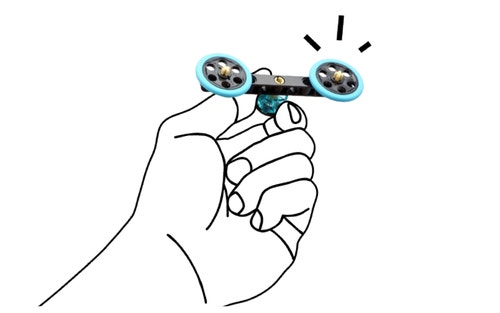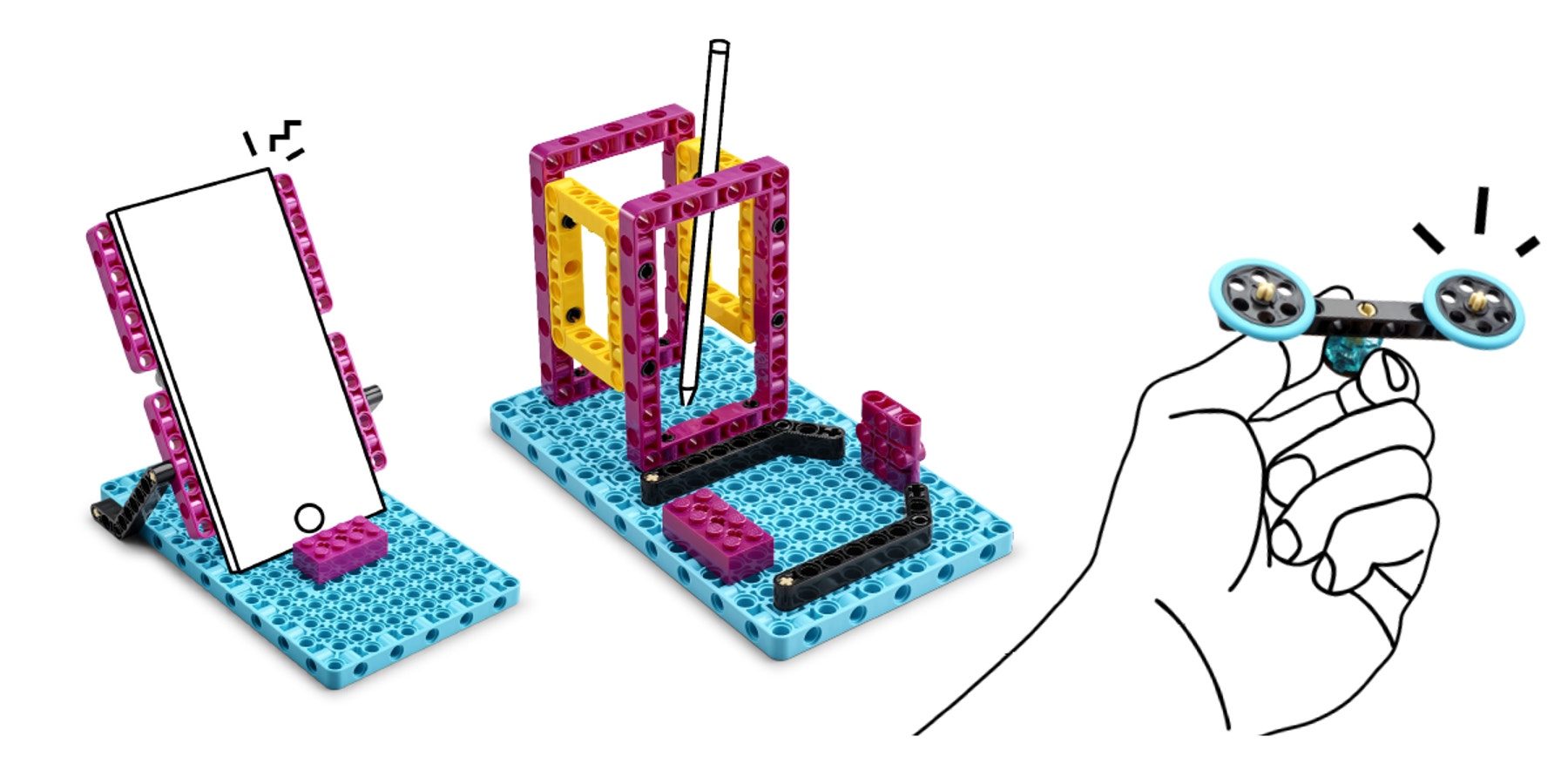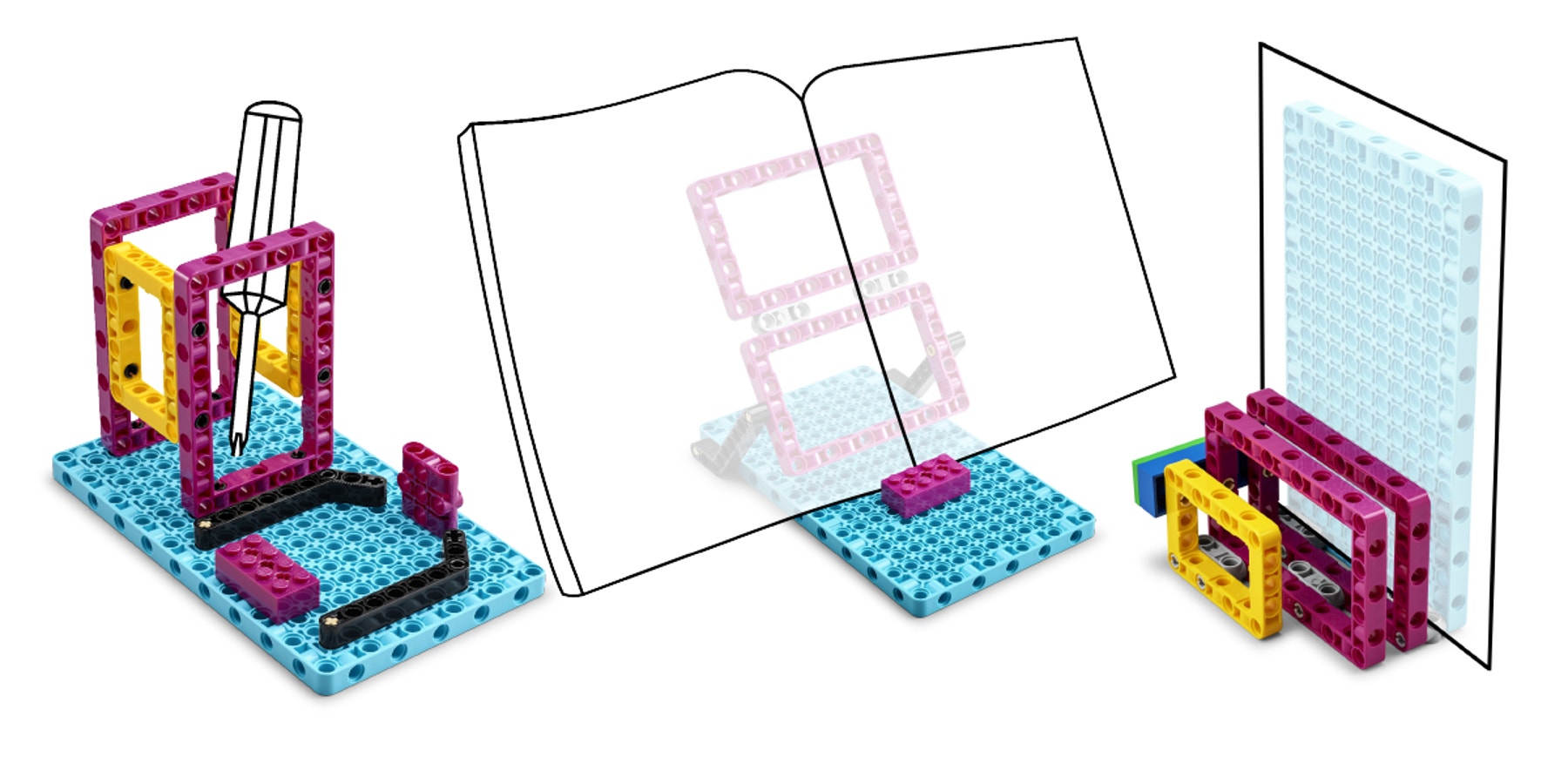Design for You
Exercise creativity, explore the design engineering process, and invent a desktop helper.

Overview
- This lesson uses the LEGO® Education Personal Learning Kit Prime. If you don’t have access to this kit you can use any other LEGO Bricks or found materials for each student.
- In this lesson, your students will follow the engineering design process to build and test a prototype of an invention to improve their workspace.
You can teach this lesson:
- As an introductory lesson to kick off the Invention Squad unit.
- Before the Design for Someone lesson, to help set the stage for the open-ended project.
- At the end of the unit to extend your students' learning and innovation.
- The Personal Learning Kit (PLK) is a take-home kit. Please follow your school’s distribution policy.
- A visual Lesson Presentation is provided in the Additional Resources section of this lesson plan. Use this presentation to pace your lesson and guide your students through each of the 5 Es.
Engineering Design Concepts
Prototype: A prototype is a sample model to test an idea.
Test and evaluate: A process of measuring how well things work. You test a prototype and evaluate how well it performed.
Engage
(10 Minutes)
Facilitate a quick discussion about where ideas for inventions come from.
- Through this discussion, you and your students will develop a shared definition of inventions and define the criteria for the invention activity.
Ask questions like these:
- Where do ideas for inventions come from? (Sample responses: wanting to solve a problem, brainstorming.)
- What are some helpful inventions that you use in your daily life?
- Where do you think the idea for that invention came from? (Encourage your students to relate the inventions they've named to a problem they've faced. This will encourage them to “Design for You.”)
Display the Engage page of the Lesson Presentation.
- This page shows sample LEGO models of "desktop helpers." Use these models to help continue the discussion, and for design inspiration later on in the lesson.

Continue the discussion using talking points and questions like these:
- Tell your students that these LEGO models are prototypes of "desktop helpers."
- What's a prototype? (Sample response: a prototype is a rough example that's been made to show a design idea.)
Encourage your students to uncover that inventions are born from necessity. Use questions and talking points like these:
- Describe your workspace.
- What kind of activities do you do at your workspace?
- What does your workspace need?
- What could you invent to improve your workspace?
Hybrid Learning Tips for the Engage Phase
Synchronous
- Facilitate a whole-class virtual discussion during your scheduled lesson time. Keep your talking to a minimum. Encourage your students to answer or pose questions of their own. Try using an online polling tool or chat function to get everyone participating.
Asynchronous
- Display the Engage page of the Lesson Presentation and choose whether your students should respond directly to you individually or collectively on a class discussion board. Online discussion boards are a great way to encourage peer-to-peer engagement without requiring all students to be present at the same time.
Explore
(15 Minutes)
- Ask your students to open their Personal Learning Kits and explore the bricks.
- Explain that they'll work independently to build a prototype of a "desktop helper."
- There aren't building instructions. Your students can refer to the inspirational model pictures on the Engage page of the Lesson Presentation, or build their own ideas.
- Display the design cycle on the Explore page of the Lesson Presentation. Have your students brainstorm ideas for their "desktop helpers," then create prototypes, and test and evaluate their inventions. They may have to go through the design cycle two or three times in order to get a viable solution.
- Remind your students that they're making prototypes, not polished models. Encourage all building styles.
Hybrid Learning Tips for Explore Phase
Make this time social. Students enjoy building with a community.
Synchronous
- If your students are participating online, they can build together in one meeting room or in small groups in breakout rooms.
Asynchronous
- With family help, encourage your students to create a designated workspace for at-home activities. A well-lit, flat, clean surface free of clutter makes an optimal building and testing surface. Please keep in mind that every student’s home situation will be different.
Explain
(10 Minutes)
- Have your students share and explain their inventions to a partner.
- The Explain page of the Lesson Presentation provides conversation prompts to help students give and receive feedback.
- Remind your students to use eye contact, a friendly tone of voice, and to focus on specific examples when giving feedback. Encourage them to reflect on how they can improve their inventions based on the feedback they receive.
Here are some suggested prompts for giving feedback:
- I’m really impressed with….
- I’d like to know more about…
- I had the same idea…
- I had a different idea…
- I suggest…
Here are some suggested prompts for receiving feedback:
- Think about which part of your invention you'd like feedback on.
- Tell me your thoughts about…
- How do you think I can improve my invention?
- Is there anything else you'd like to tell me?
After your students have shared feedback, ask them to explain their design engineering process.
Ask questions like these:
- How did you define the problem to solve in your workspace?
- How did you go about brainstorming ideas?
- How did you test and evaluate your inventions?
Hybrid Learning Tips for Explain Phase
Synchronous
- If students are participating online, review the feedback conversation prompts on the Explain page of the Lesson Presentation and have them give and receive feedback to each other in small groups in break-out rooms.
- Visit break-out rooms and check for student understanding by having each group share a piece of specific feedback.
- Answer your students’ questions and directly address misconceptions to develop a deeper understanding of the concept at hand.
Asynchronous
- Encourage your students to reflect on their feedback by sharing back with the whole group or by posting a comment in the group chat.
Elaborate
(5 Minutes)
- Have your students explain how they'd improve their inventions, and how feedback from their peers has helped them.
- The Elaborate page in the Lesson Presentation shows examples of how the LEGO inspiration models could be revised. You can use this page to inspire your students in coming up with ways to improve their inventions.
- If you've already introduced LEGO Education SPIKE™ Prime in your classroom, you can encourage your students to think about and sketch how they could transform their inventions into SPIKE Prime models.

Hybrid Learning Tips for the Elaborate Phase
Synchronous
- Host a scheduled online sharing session in which your students share how they might revise their solutions.
Asynchronous
- Set up a virtual gallery walk where your students can share their work. Encourage them to post pictures and videos of their work and check out their peers' work.
Evaluate
(5 Minutes)
- Invite each student to share an example of how their invention helped improve their workspace, and how they improved their initial idea.
Ask your students to raise a colored brick to self-evaluate their performance:
- Red brick: With some help, I can define a problem and evaluate different design solutions to the problem.
- Yellow brick: I can explain how to define a problem, and explain how to evaluate different design solutions to the problem.
- Green brick: I can teach others how to define a problem, and teach others how to evaluate different design solutions to the problem.
Hybrid Learning Tips for the Evaluate Phase
You have many options for assessment— a written assignment, a live or recorded oral presentation, or a drawing that shows your students' understanding.
Synchronous
- Facilitate a whole-class virtual discussion during your scheduled lesson time.
Asynchronous
- Have your students reflect on their work by posting a written assignment, a live or recorded oral presentation, or a drawing that demonstrates their understanding.
Teacher Support
Students will:
- Define criteria and constraints in order to solve a design problem
- Evaluate different design solutions
- Analyze and communicate similarities and differences between design solutions
- Identify possible improvements to the chosen solutions
- LEGO® Education Personal Learning Kit Prime (1 per student) or other LEGO bricks or found materials for each student
- Lesson Presentation (see Additional Resources)
- Paper (2 pieces per student)
- Writing/drawing implements (pens, pencils, markers)




